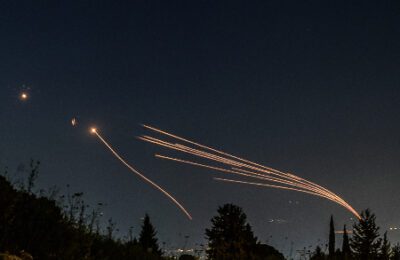The AJC, or American Jewish Committee, along with many other Jewish organizations, most notably the ADL, has long advocated for separation of church and state. It is certainly a worthy cause seeing as it has served to both protect and nourish our country’s religious diversity.
Yet, a recent example of advocating for separation of church and state doesn’t seem the right battle to pick.
AJC has joined in filing an amicus brief calling on the US Supreme Court to rule unconstitutional a large Latin cross on government property in a Washington, DC suburb. At first blush this seems like a no-brainer. But the cross was erected in 1925 to commemorate 49 local servicemen who died in WW I. The memorial stands on state-owned land and is maintained by the state of Maryland.
To be fair, we know very little of this memorial, apparently a 40-foot-tall concrete cross in Bladensburg, Md. We have neither seen it, nor frankly, prior to now, had ever heard of it. But the idea of ruling a memorial to soldiers who gave their lives as unconstitutional is repugnant.
AJC General Counsel Marc Stern said: “Though this Latin cross has been standing for more than 90 years, a reexamination of the government’s role in sustaining this Christian monument is essential.” He says, “The government clearly has failed the test of neutrality on matters of faith, of not favoring one religion over another.”
A memorial to the war dead is one of the most powerful, emotional memorials there can be. It is testament to the lives sacrificed on behalf of fellow countrymen and women. It is a sacred space; and just as a cemetery reflects the religious denomination of its dead, a memorial may choose to personalize its connection to those it represents.
War memorials are wrenching places. Often they represent the burial places for those whose actual burial place will forever remain unknown. The battlefields of World Wars are brutal places, from which not all bodies were recovered and then interred. We do not know if that is the case with regards to the Bladensburg memorial, if the soldiers in whose honor it was erected have a known burial place, but that is immaterial. It is part of a body of memorials to arguably the most catastrophic event of the 20th century. We would not dare to disturb its peace.
The Bladensburg memorial was designed by mothers who lost their sons in the war, and who were inspired by the cemeteries of Flanders Fields, where, in the words of the poet John McCrae, the gravestones “row on row” mark the place where the soldiers are buried. Indeed, the cross greatly resembles the headstones found throughout Belgium and France.
Perhaps the reexamination required is that on the part of the organizations who filed this brief. They claim that any rationale presented in favor of the memorial “Would give governments carte blanche to erect new crosses.” Poppycock! When was the last time a war memorial was erected in the United States? And when was the last time a war memorial was erected with a huge religious symbol? If the Bladensburg memorial in 90 years hasn’t caused a rash of religious government-maintained memorials, why would it begin to do so now?
Oral arguments in The American Legion vs. the American Humanist Association were scheduled to begin today, Feb. 27.
Obviously the Supreme Court must address this from a strictly constitutional perspective. But to those who filed the brief — among them Jewish groups AJC and Central Conference of American Rabbis — we’re left wondering: Where is their humanity?
Perhaps they should revisit the words of the poet. The final verse of McCrae’s haunting “In Flanders Field” reads almost as a warning against just this sort of action:
If ye break faith with us who die
We shall not sleep, though poppies grow
In Flanders fields.













